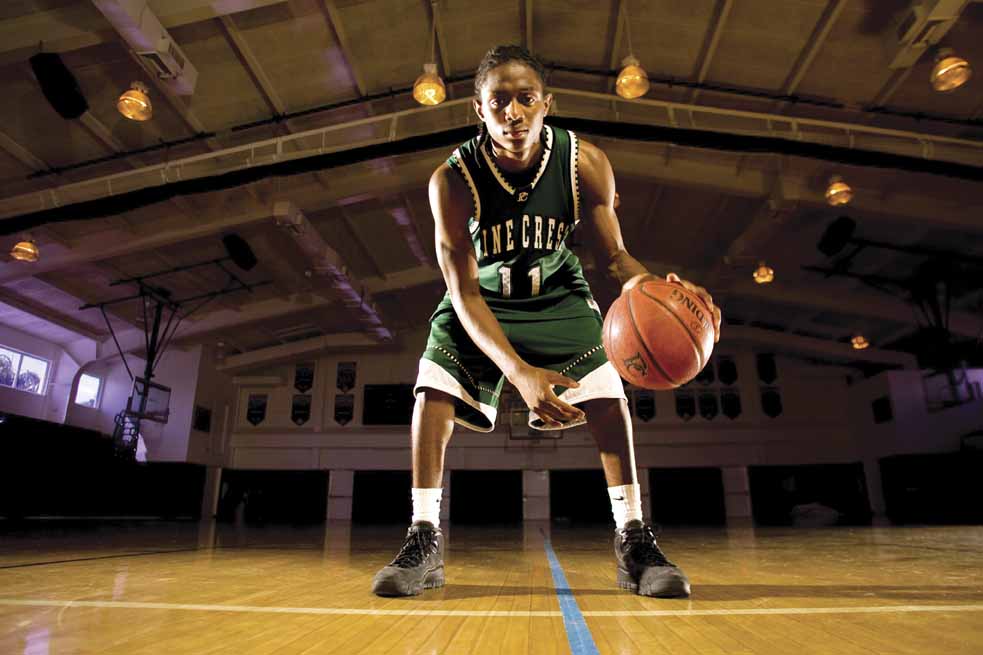Brandon's future looked bright. He was a straight-A honor student at Pine Crest Preparatory School and, at just 15, Brandon was already a basketball legend in not only his local community—but nationwide as well. One day in February 2007, however, it looked like Brandon might never play basketball again.
Brandon was getting ready to take a shower this particular night and realized he couldn’t feel hot or cold water with his right hand. A few days later, he fell and cut his elbow during a game and was unable to feel that either.
Brandon’s parents took him to see an orthopedic sports physician who ordered a magnetic resonance image (MRI) that showed a syrinx—a fluidfilled cavity within Brandon’s spinal cord that was the likely cause of weakness in his hands and arms, as well as deficits in pain and temperature sensation. A cyst at the base of the syrinx was also pressing up against Brandon’s spinal cord, putting him at risk for developing progressive problems that could eventually prevent him from not only playing basketball, but even walking and running. When the orthopedic physician determined that Brandon’s condition could also affect his neurological capabilities, he went to see a neurosurgeon for further evaluation.
A Second Opinion
At the time of Brandon’s initial visit, the syrinx and cyst were relatively small. The neurosurgeon decided the best option would be to just watch and track the progress of both to see if they would not progress in time. He released Brandon to play basketball with his school team, the Pine Crest Panthers, and with his summer traveling team. He also attended the Steve Nash–Nike Skills Academy and the National Basketball Association (NBA) Top 100 High School Basketball Camp.
Brandon played basketball all summer but before the start of the next school year, his parents decided they wanted a second opinion regarding their son’s medical condition. They took him to see David Sandberg, MD, FAAP, pediatric neurosurgeon on staff at Nicklaus Children's Hospital, formerly Miami Children's Hospital, and Assistant Professor at the University of Miami Miller School of Medicine. Dr. Sandberg repeated Brandon’s MRI and found the syrinx had gotten larger. Brandon needed surgery immediately.
A Surgical Success
Brandon’s surgery was scheduled for October 15, 2007, and although they were nervous, his parents were reassured by Dr. Sandberg’s confidence.
“I couldn’t have asked for a better surgeon,” says Tanya, Brandon’s mother. “Before the surgery, he told us, ‘I’ll see you in five or six hours—I don’t expect any complications.’ His directness and assuredness put us at ease. It was clear he knew what he was doing.”
Since Brandon was still a teenager and had a promising basketball career ahead of him, Dr. Sandberg chose to perform the least invasive surgery possible. Two weeks later, Brandon returned to school, and within three months he was back playing basketball like he’d never left the court. He went on to lead the Pine Crest Panthers to the state championship title in February 2008 and was named the Broward County Player of the Year.
“The operation was successful in every way,” says Dr. Sandberg. “All of Brandon’s symptoms are resolved. In fact, you’d never know he had undergone surgery at all by watching him play basketball. And three months after surgery, a follow-up MRI showed that both the syrinx and cyst are completely gone.”
How’s that for a miracle child?
